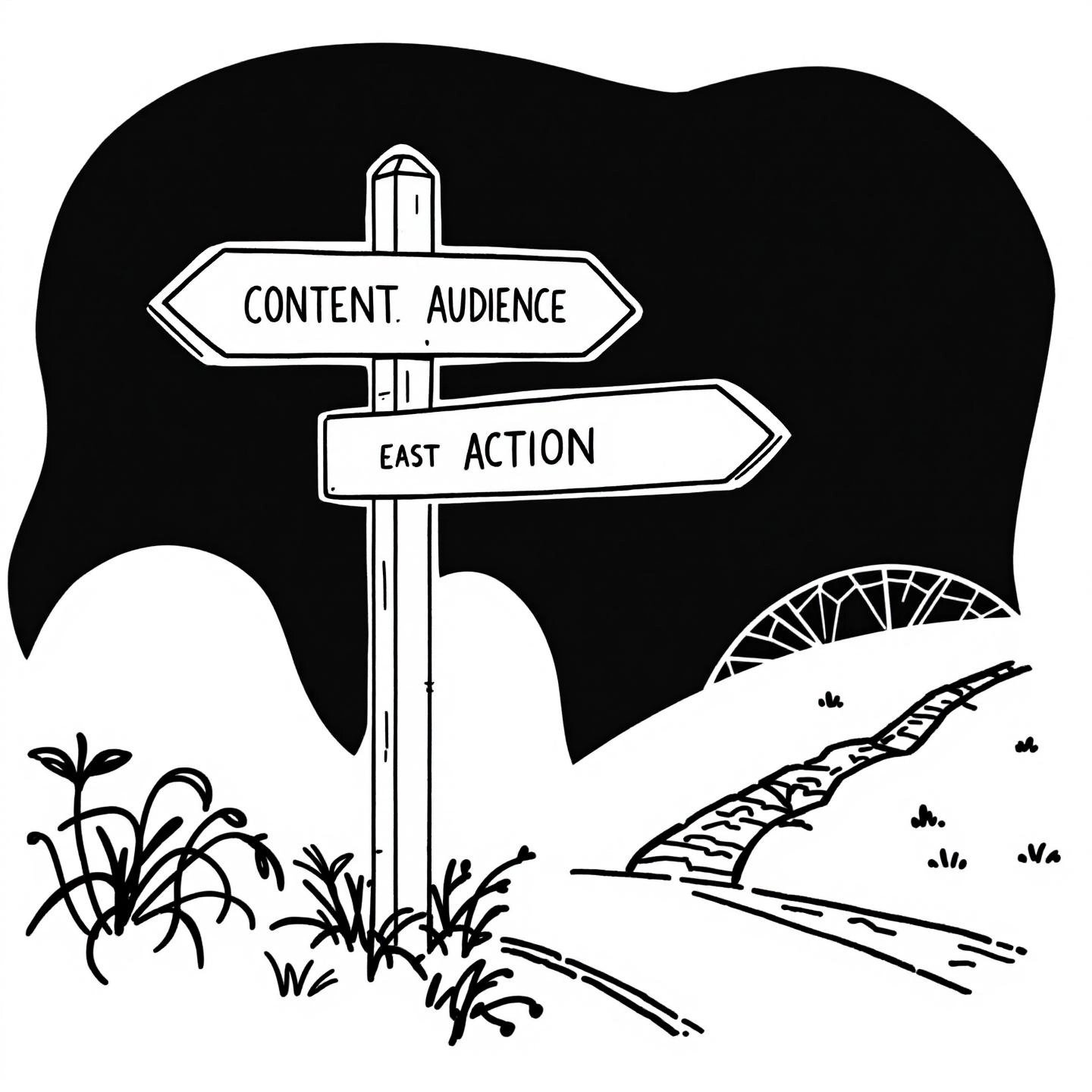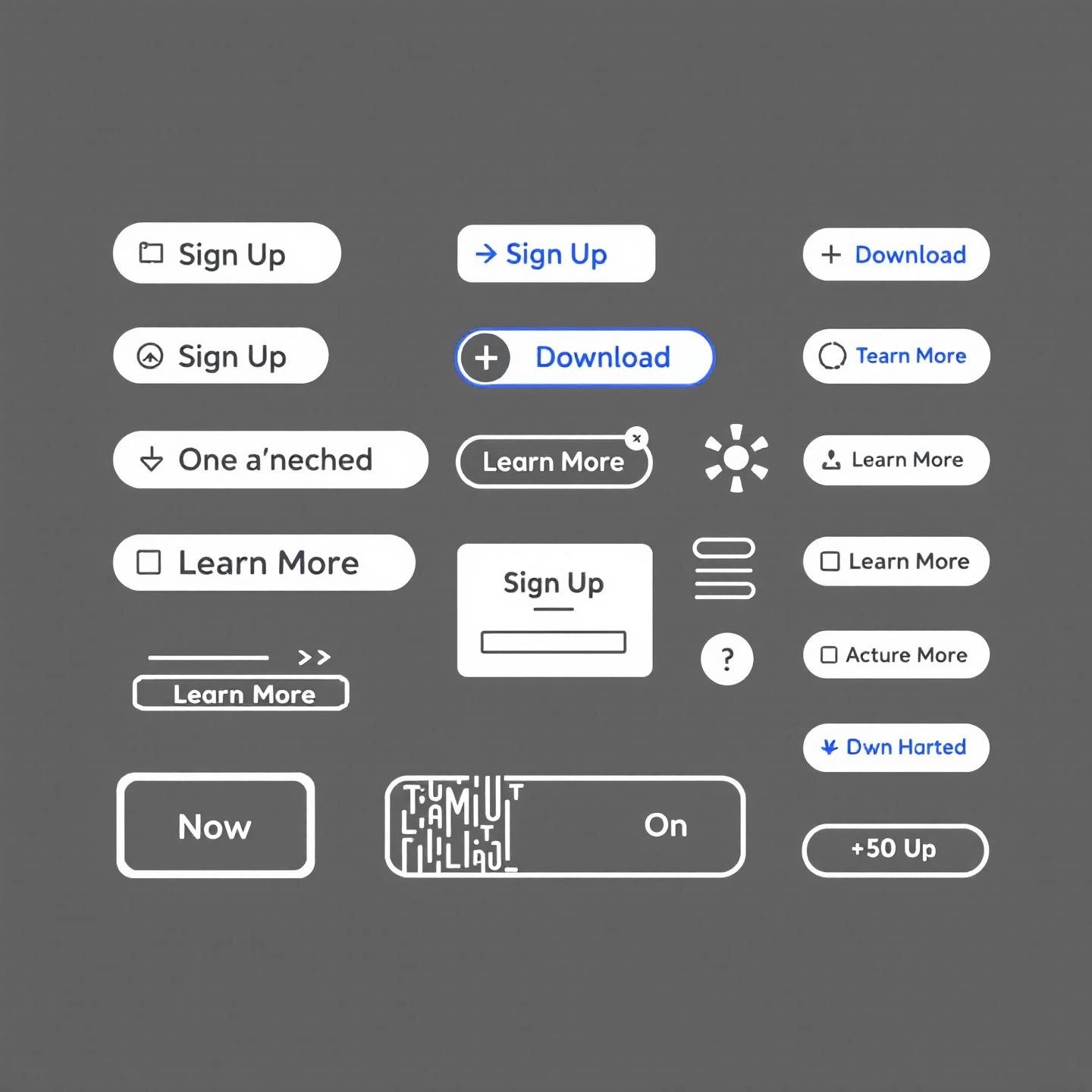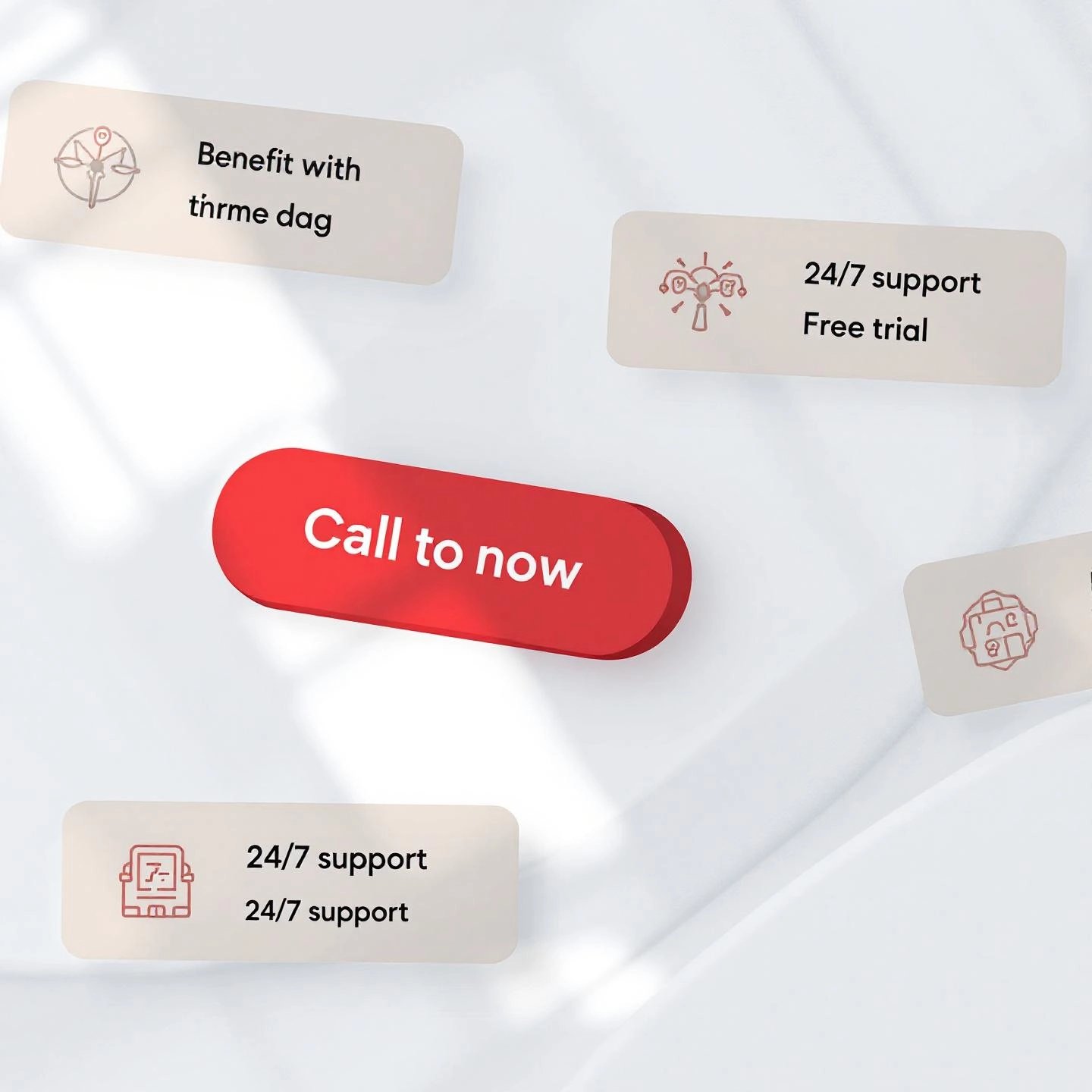Introduction to What Is a Call to Action in Writing
Have you ever finished reading a blog post and wondered, "What should I do next?" If so, you’ve likely encountered content missing a crucial ingredient: the call to action (CTA). So, what is a call to action in writing? In its simplest form, a CTA is a clear directive—usually a short phrase or sentence—designed to prompt an immediate response from the reader. Whether it’s urging someone to subscribe, download, buy, or simply learn more, a CTA transforms passive readers into active participants.
Sounds straightforward? That’s because it is. Yet, the impact of a well-placed CTA goes far beyond just adding a button or link. In business and marketing content, a CTA is the bridge between your message and your audience’s next step. It’s what turns curiosity into clicks, and clicks into conversions. Imagine writing a compelling product review or an insightful guide, but leaving your readers with nowhere to go next. Without a CTA, even the most engaging content can fall flat, leading to missed opportunities for lead generation, sales, and meaningful engagement.
- Want readers to sign up for your newsletter? You need a strong CTA.
- Looking to drive sales from your product page? A persuasive CTA is essential.
- Hoping to boost engagement on your latest blog post? The right CTA can make all the difference.
Ultimately, a call to action isn’t just a marketing buzzword—it’s a fundamental strategy for achieving tangible business results from your writing. By guiding your audience toward a specific action, you ensure your content isn’t just seen, but acted upon. That’s the power behind every effective CTA.

Understanding the Core Definition of a Call to Action
When you hear the phrase call to action, you might picture a bold button or a catchy phrase urging you to “Buy Now.” But what is call to action in writing, really? At its core, a call to action (CTA) is much more than a sentence tacked onto the end of your content—it’s a purposeful prompt that guides your reader toward a specific next step, leaving no room for confusion or hesitation (CreativeWritingEDU).
Breaking Down the Call to Action Meaning in Writing
Think of a CTA as the GPS for your reader’s journey. Without it, even the most compelling content can leave your audience at a crossroads, unsure where to go next. The call to action definition in writing centers on providing clear, direct instructions—whether that’s subscribing, downloading, sharing, or making a purchase. Its strategic purpose is to transform passive reading into active engagement and, ideally, conversion.
So, what makes a CTA effective? Let’s break down the essential characteristics you’ll notice in every high-performing call to action:
- Action-Oriented: Every CTA starts with a strong verb—think "Subscribe," "Download," "Join," or "Start." This immediately signals to the reader what you want them to do.
- Clear and Concise: Effective CTAs get straight to the point. There’s no room for ambiguity or wordiness; the message is direct and easy to understand (Shopify).
- Sense of Urgency (When Appropriate): Phrases like “Act now,” “Limited time,” or “Don’t miss out” can inspire readers to respond quickly, especially when time-sensitive offers are involved.
- Visually Distinct (in Digital Content): In online writing, CTAs often stand out with bold colors, buttons, or links, making them hard to miss and easy to act on.
- Clear Value Proposition: A great CTA communicates what the reader gains by taking action—whether it’s exclusive content, a special offer, or valuable information.
How Context Shapes the Call to Action
While the fundamentals remain the same, the exact form and tone of a CTA can shift depending on the context. In marketing emails, you might see a bold “Shop Now” button. In a blog post, it could be a simple text link inviting readers to “Learn More.” Even in academic or thought leadership pieces, a CTA might encourage readers to “Explore further research” or “Join the discussion.”
Regardless of the setting, the underlying goal is always to eliminate ambiguity and guide the reader toward a meaningful next step. As you move forward, you’ll see how a well-crafted CTA becomes the engine behind higher engagement, conversions, and business results.
The Purpose and Power of a Strong CTA
Ever wonder why some websites seem to effortlessly turn visitors into loyal customers while others struggle to get a single click? The answer often lies in how effectively they use calls to action. So, what does call to action mean in writing from a business perspective? Quite simply, it’s your strategic tool for guiding every visitor along a purposeful journey—transforming casual readers into engaged leads, customers, or community members.
Guiding the Customer Journey
Imagine landing on a site that inspires you, but leaves you with no clear next step. Frustrating, right? A strong CTA eliminates that uncertainty, acting as a signpost that tells your audience exactly where to go next. This isn’t just about convenience; it’s about intentional direction. Each CTA, whether it’s “Download Now,” “Request a Demo,” or “Subscribe to Updates,” is carefully crafted to match where your reader is in their journey—helping them move from awareness to consideration, and finally, to action.
- Improving Conversion Rates: CTAs are proven to nudge users toward desired actions, be it signing up, making a purchase, or engaging with more content. Without a clear CTA, even the most compelling copy may fall flat, leaving leads and opportunities untapped.
- Moving Users Through the Funnel: Different CTAs serve different stages—top-of-funnel CTAs might offer a free resource, while bottom-of-funnel CTAs encourage a sale or demo booking. This intentional sequencing keeps your audience engaged and progressing.
- Measuring Content Effectiveness: CTAs provide tangible metrics. By tracking click-through rates and conversions, you can evaluate which messages resonate and optimize your strategy accordingly.
- Building a Subscriber List or Community: CTAs aren’t just for sales—they’re essential for growing your email list, social following, or online community, laying the foundation for long-term engagement.
Why CTAs Are Non-Negotiable for Business Success
In today’s crowded digital landscape, readers are bombarded with choices. A well-placed CTA cuts through the noise and gives your audience a reason to act now. Businesses that treat CTAs as afterthoughts often miss out on valuable conversions, while those that prioritize and optimize them consistently see higher engagement and ROI. That’s why professional content services like BlogSpark focus so heavily on CTA strategy—because each click, sign-up, or download is a measurable step toward your business goals.
As you continue exploring, you’ll see how the right CTA can be adapted to fit any business objective, ensuring your content not only attracts attention but drives real, profitable action.

Essential Call to Action Examples for Any Content
When you sit down to write, it’s easy to get stuck on the final step: what do you actually want your reader to do? That’s where having a toolkit of call to action examples in writing can make all the difference. While the specific wording might change depending on your goal, the core purpose of every CTA is the same—to prompt your audience to take a clear, desired action.
Imagine you’ve just finished reading a compelling article. Would you be more likely to engage if you saw, “Learn more,” “Download your free guide,” or “Shop the collection”? Each of these is a sample call to action in writing examples that motivates a different type of response. The best CTAs are tailored to your business objectives and your audience’s readiness to act.
Quick-Reference Table: Call to Action in Writing Examples
| Goal | CTA Phrase Example | Best Used In |
|---|---|---|
| Lead Generation | Sign Up for Our Newsletter | Blog posts, website pop-ups, landing pages |
| Lead Generation | Download Our Free Ebook | Resource pages, gated content, email campaigns |
| Sales | Buy Now | Product pages, sales emails, digital ads |
| Sales | Add to Cart | Ecommerce product listings, checkout pages |
| Content Engagement | Read More | Blog teasers, article summaries |
| Content Engagement | Watch Now | Video content, webinar promotions |
| Social Sharing | Share This Post | Blog posts, newsletters, social media |
| Social Engagement | Follow Us on Facebook | Website footers, email signatures, social media bios |
| Event Registration | Register Now | Event pages, webinar invites, landing pages |
| Event Registration | Save Your Spot | Online event promotions, sign-up forms |
| Contact/Inquiry | Contact Us | Contact pages, support sections, service descriptions |
| Contact/Inquiry | Get in Touch | Consultation offers, about pages |
| Download Resource | Download Now | Whitepaper offers, digital resource libraries |
| Subscription | Start Your Free Trial | SaaS platforms, service sign-up pages |
| Subscription | Subscribe Now | Email opt-ins, content upgrades |
| Feedback & Reviews | Leave a Review | Post-purchase emails, thank-you pages |
| Feedback & Reviews | Share Your Feedback | Surveys, customer support follow-ups |
| Donation | Donate Now | Nonprofit websites, fundraising campaigns |
| Donation | Support Our Mission | Charity appeals, community initiatives |
Tips for Using CTA Examples Effectively
- Match the CTA to Your Goal: Choose a phrase that fits your marketing objective—don’t ask for a sale if your reader is still gathering information.
- Keep It Short and Clear: The best call to action in writing examples are concise. Aim for two to five words whenever possible.
- Personalize When Possible: CTAs like “Get My Free Guide” or “Start Your Journey” can boost engagement by speaking directly to the reader.
- Test and Refine: Try different CTAs for the same goal to see what resonates—sometimes a small tweak can make a big difference.
Ultimately, whether you’re writing a blog post, crafting an email, or designing a landing page, the right CTA bridges the gap between your message and your business goals. In the next section, you’ll learn how to craft your own high-impact CTAs using action-driven language that inspires real results.
How to Craft Compelling CTAs with Action-Oriented Language
Ever wondered why some calls to action leap off the page, while others fade into the background? The secret often lies in the language you choose. When you study call to action phrases examples in persuasive writing, you’ll notice that the most effective CTAs use powerful, direct verbs and clear benefits. It’s not just about telling your reader what to do—it’s about inspiring them to act, right now.
Why Word Choice Matters in Persuasive CTAs
Imagine you’re reading a landing page that ends with, “Click here.” Does that make you feel excited or compelled? Now compare that to, “Claim Your Free Guide Now” or “Start Saving Today.” The difference is immediate: action-driven phrases spark motivation and create a sense of urgency or value. The right verb transforms a simple instruction into a persuasive command that moves your audience from passive reading to active engagement.
Action Verbs That Drive Results
Below, you’ll find a categorized list of action verbs and phrases to help you write CTAs that fit your intent—whether you want to create urgency, highlight value, foster community, or lower commitment barriers. Use these as building blocks for your next CTA:
- For Urgency:
- Act Now
- Claim Your Spot
- Limited Time Offer
- Don’t Miss Out
- Register Before It’s Gone
- For Value:
- Get Your Free Guide
- Reserve Your Seat
- Unlock Exclusive Access
- Discover More Benefits
- Start Saving Today
- For Community:
- Join Our Newsletter
- Subscribe for Updates
- Become a Member
- Share Your Story
- Connect with Us
- For Low Commitment:
- Learn More
- Explore Our Features
- Find Out How
- Read the Guide
- Watch the Demo
Each of these phrases does more than just direct—it motivates. For instance, using “Get” or “Claim” immediately signals value, while “Join” and “Subscribe” foster a sense of belonging. Phrases like “Learn More” or “Explore” are perfect when you want to encourage curiosity without overwhelming commitment.
Tips for Writing Your Own Persuasive CTAs
- Start with a strong verb: Action is the heart of every effective CTA. Verbs like “Start,” “Unlock,” and “Join” set the tone and expectation right away.
- Be clear and specific: Let your audience know exactly what to expect. Instead of “Click here,” try “Download Your Free Checklist.”
- Highlight the benefit: Tie your CTA to a clear value, such as “Save Time Today” or “Access Expert Tips.”
- Match tone to intent: Use urgency for time-sensitive offers, value for lead magnets, and community language for group-based actions.
When you combine these strategies, your CTAs become more than just instructions—they become irresistible invitations. Next, let’s explore how these persuasive techniques are applied in high-stakes sales and persuasive writing scenarios.

The CTA's Role in Sales Copy
When you read a sales page or persuasive pitch, have you ever felt that final push—the moment you’re compelled to make a decision? That’s the power of a well-crafted call to action. So, what is a call to action in persuasive writing? It’s the pivotal, decisive moment where you directly ask your reader to take the next step, whether that’s making a purchase, signing up, or booking a call. In persuasive writing, the CTA isn’t just a polite suggestion—it’s your closing argument, the final nudge that turns interest into action.
Overcoming Hesitation: The Psychology Behind Persuasive CTAs
Imagine your audience is on the fence. They’ve read your benefits, seen your testimonials, and understand your offer. But hesitation lingers. This is where the CTA in persuasive writing truly shines. The best CTAs do three things:
- Emphasize Benefits: Instead of a generic “Submit,” use CTAs that restate the core value (“Claim Your Free Trial” or “Get Instant Access to Savings”). This reminds readers what they gain by acting now.
- Reduce Perceived Risk: Address lingering doubts by incorporating phrases like “Risk-Free Trial” or “Cancel Anytime,” making it easy for readers to say yes.
- Create FOMO (Fear of Missing Out): Urgency phrases such as “Limited Time Offer” or “Only a Few Spots Left” spur immediate action by tapping into the fear of missing out.
Each of these elements helps overcome the reader’s last-minute objections, guiding them smoothly from consideration to conversion. You’ll notice that the most effective call to action examples in persuasive writing are direct, specific, and strategically placed—often at the end of a pitch, above the fold, or repeated in key sections for maximum impact.
Crafting CTAs That Convert: Practical Examples
Let’s break down a few high-impact examples of call to action in persuasive writing you might use on sales pages or landing pages:
- "Start Your Free Trial Now" – Combines immediacy with a low-risk offer.
- "Unlock Exclusive Access" – Suggests scarcity and special value.
- "Reserve Your Spot Before It’s Gone" – Taps into urgency and FOMO.
- "Get My Discount" – Uses first-person language to increase ownership and engagement.
Notice how each phrase is clear, direct, and benefit-driven. They don’t just instruct—they persuade.
Why CTA Expertise Matters in High-Stakes Copy
Writing a persuasive CTA is both an art and a science. It requires a deep understanding of your audience’s motivations, objections, and the psychology of decision-making. That’s why many businesses turn to professional services that specialize in sales psychology and conversion-focused writing. Outsourcing your CTA strategy to experts—like those at BlogSpark—can dramatically lift your results, ensuring every piece of sales copy ends with a compelling, high-converting ask.
As you move forward, remember: the CTA is never an afterthought. It’s the final, crucial step that transforms persuasive writing into profitable action. Next, we’ll see how CTAs adapt beyond sales copy, playing a vital role in thought leadership and argumentative writing as well.
CTAs in Argumentative and Thought Leadership Content
When you think of a call to action, do you only picture sales buttons or marketing pitches? The truth is, CTAs are just as essential in academic, argumentative, and thought leadership writing as they are in business. So, what is a call to action in argumentative writing? Here, a CTA is a clear prompt that encourages readers to reflect, reconsider a viewpoint, support a cause, or even take part in further research—rather than simply buy or sign up.
Why CTAs Matter in Non-Sales Writing
Imagine reading a powerful opinion piece or research article. Without a closing directive, even the most compelling argument can fade without impact. CTAs in these contexts guide readers to act on new knowledge, question assumptions, or join a broader conversation. This is where the versatility of CTAs shines: they don’t just drive business results—they spark critical thinking and action across all types of writing.
What Does a CTA Look Like in Argumentative or Thought Leadership Writing?
In these genres, the "action" might not be a transaction, but a transformation in understanding or behavior. A call to action in argumentative writing often appears in the conclusion, urging readers to:
- Reevaluate their beliefs or assumptions on the topic
- Support a social, political, or environmental cause
- Participate in ongoing research or debate
- Share the article to broaden the conversation
- Seek out additional resources or evidence
Let’s look at some call to action examples in argumentative writing you can adapt for your own content:
- Encouraging Research Review: "Explore the latest studies to deepen your understanding of this issue."
- Supporting a Cause: "Take a stand—sign the petition to support clean energy initiatives."
- Challenging Assumptions: "Consider how your daily choices impact the environment and challenge yourself to make one sustainable change this week."
- Inviting Dialogue: "Join the discussion in the comments below and share your perspective."
- Promoting Further Exploration: "Read our comprehensive guide for a deeper dive into this topic."
Notice how these CTAs don’t push for a sale, but instead invite readers to take meaningful, real-world steps. This approach not only increases engagement but also positions your writing as a catalyst for change and deeper learning.
As you craft your next blog post, op-ed, or research paper, remember: a well-placed CTA can transform passive reading into active participation. In the following section, we’ll explore how these principles apply specifically to blogs and digital content, where CTAs drive conversions and long-term engagement.

Driving Conversions with CTAs in Your Blog and Content Marketing
When you publish a blog post or digital article, what do you hope your reader does next? Do they sign up for your newsletter, download a resource, or simply keep exploring your site? If you’ve ever wondered how to turn passive readers into active participants, the answer lies in mastering the call to action in content writing.
What Is a Call to Action in Content Writing?
At its core, a call to action in content writing is the purposeful placement of a directive—often a phrase, button, or link—within your content to guide the reader toward a specific business goal. It’s not just about adding a “Buy Now” button at the end of an article. Instead, it’s about strategically weaving clear, actionable prompts throughout your content to move readers from interest to engagement, and ultimately, to conversion.
Primary vs. Secondary CTAs: Why Both Matter
Think of your blog as a journey with multiple possible destinations. Some readers are ready to take the leap—these are your primary CTA targets. Others need more time or information, making them ideal for secondary CTAs. But what’s the difference?
- Primary CTA: This is your main ask—the high-value action you want readers to take, such as making a purchase, booking a call, or subscribing to your service. It typically requires a higher level of commitment and is often visually prominent.
- Secondary CTA: These are softer asks, like downloading a free guide, reading a related article, or following your brand on social media. They require less commitment but keep readers engaged and moving through your funnel.
For example, an e-commerce blog post might feature a primary CTA like “Shop the Collection” and a secondary CTA such as “Read Customer Reviews” or “Download Our Style Guide.” Both types serve different reader mindsets and help maximize your content’s impact.
Strategic Placement: Where Should CTAs Go?
Placement is just as important as wording. If your CTA is hidden or appears only once, you risk missing readers who skim or scroll quickly. Here’s how to make your CTAs count:
- Above the Fold: Place your most important CTA near the top of your article—this captures readers who don’t scroll far.
- Within the Body (Inline CTAs): Add context-specific CTAs in the middle of your content, especially after sharing valuable tips or insights. These can be text links, buttons, or even banners.
- At the End of the Post: Conclude with a strong CTA that summarizes the next logical step. This is ideal for readers who have engaged with your entire message (Hotjar).
For longer posts, consider placing multiple CTAs—just be careful not to overwhelm your audience. Too many options can create confusion and reduce conversions. Instead, prioritize clarity by visually distinguishing your main CTA and offering one or two supportive secondary options.
Real-World Example: How Top Blogs Use CTAs
Imagine reading a marketing blog post with a primary CTA like “Download Our Free Toolkit” at the top, an inline CTA halfway through inviting you to “Subscribe for Weekly Tips,” and a final CTA at the end encouraging you to “Share This Article.” Each placement meets readers where they are in their journey, increasing the chances of engagement.
When you thoughtfully integrate calls to action in content writing, you transform your blog from a passive resource into an active engine for business growth. Next, we’ll bring all these strategies together with a checklist of best practices to ensure your CTAs are both irresistible and effective.
Best Practices for an Irresistible Call to Action
When you sit down to write a call to action, does it ever feel like walking a tightrope? Too bland, and your audience scrolls right by. Too forceful, and you risk turning them off. So, what separates a forgettable CTA from one that drives real results? The answer is a blend of creativity, psychology, and proven tactics—a true mix of art and science.
Sounds complex? Let’s simplify it. Whether you’re crafting a CTA for a blog, sales page, or email campaign, following a set of best practices can dramatically improve your odds of success. Here’s a practical checklist you can use to evaluate and refine every call to action you write:
- Start with a Strong Command VerbAction is everything. Use direct, energetic verbs like “Get,” “Join,” “Start,” “Claim,” or “Discover” to immediately signal what you want the reader to do (Basis).
- Keep It Short and ClearDon’t bury your message in long sentences. The most effective CTAs are typically between two and five words—think “Download Now” or “Subscribe Free.” Short, punchy CTAs are easier to read and act on.
- Create a Sense of UrgencyEncourage immediate action by adding urgency. Phrases like “Act Now,” “Limited Time,” or “Don’t Miss Out” tap into the reader’s fear of missing out and can increase conversions.
- Make It Stand Out VisuallyIf your CTA looks like the rest of your content, it’ll get lost. Use bold colors, larger fonts, or buttons that contrast with your page design. Be sure to test on different devices for accessibility and visibility.
- Focus on ValueExplain what’s in it for your audience. Instead of “Click Here,” say “Get Your Free Guide” or “Unlock Expert Tips.” Highlighting the benefit makes the action more compelling.
- Limit the Number of ChoicesToo many CTAs on one page can overwhelm and confuse readers. Prioritize one main action per page or section to keep your audience focused and boost conversion rates.
- Use Supporting Text for ContextSometimes, a brief line before your CTA—explaining the benefit, or offering social proof—can give hesitant readers the nudge they need.
- A/B Test and Optimize RegularlyDon’t rely on guesswork. Test different CTA wording, colors, placements, and formats to see what resonates with your audience. Even a small tweak—like changing a button color or adjusting copy—can lead to significant improvements.
Imagine you’re launching a new ebook. You might start with “Download Now” in a bright green button, add a line above it highlighting the value (“Get expert tips to grow your business”), and test a version with “Claim Your Free Guide Today.” Over time, with consistent A/B testing, you’ll discover the formula that best motivates your audience.
Of course, mastering these best practices takes time, experimentation, and a deep understanding of your readers. If you want to ensure every CTA is optimized for maximum impact—but don’t have the bandwidth to test and refine endlessly—partnering with a dedicated content service like BlogSpark can help you stay ahead. Their expertise in CTA strategy, design, and ongoing optimization means your content never leaves results to chance.
In the final section, we’ll wrap up with a recap and a meta call to action you can put into practice today.
Conclusion
When you finish writing a blog post, sales page, or thought leadership article, have you ever paused to ask, “What do I want my reader to do next?” That single question is at the heart of every effective call to action (CTA)—and it’s what separates content that simply informs from content that inspires results.
Let’s recap the essentials:
- A CTA is a clear directive. It tells your audience exactly what step to take next, eliminating confusion or hesitation.
- CTAs guide users toward your goals. Whether you want to generate leads, drive sales, build a community, or spark discussion, the right CTA is your map from message to measurable outcome.
- Form follows function. The most effective CTAs adapt to their context—using urgency in sales copy, inviting engagement in blogs, or encouraging reflection in argumentative writing.
Ultimately, a CTA is more than a button or a phrase—it’s the engine that turns your content into a true business asset. Without it, even the most compelling copy risks leaving readers at a dead end, missing the chance to connect, convert, or create lasting value.
So here’s your final, meta call to action: Now that you understand the power of a great CTA, it’s time to put one to work. Review your own content today—look for places where a clear directive could drive engagement, sales, or deeper relationships. Or, if you’re ready to see just how much expertly crafted CTAs can transform your results, contact a professional at BlogSpark and take your content strategy to the next level.
Remember, every piece of writing is an opportunity. Make sure yours always leads to action.
Frequently Asked Questions About Calls to Action in Writing
1. What is an example of a call to action in writing?
A typical call to action (CTA) in writing is a directive that encourages readers to take a specific step, such as "Sign up for our newsletter," "Download our free guide," or "Contact us today." Effective CTAs are concise, action-oriented, and tailored to the content’s goal, whether that’s generating leads, driving sales, or increasing engagement.
2. What does a call to action mean in an essay or article?
In essays or articles, a call to action is a statement that prompts readers to take a desired action after reading. This could mean encouraging readers to adopt a new perspective, further research a topic, support a cause, or participate in a discussion. The CTA gives direction, ensuring the content leads to meaningful engagement or reflection.
3. How do you write a strong call to action?
To write a strong call to action, start with a clear, commanding verb, keep the message short and direct, highlight the value or benefit, and, if appropriate, create a sense of urgency. Visually distinguish your CTA with formatting or buttons in digital content, and always align it with your primary business or engagement goal. Testing different CTAs can help determine which performs best.
4. Why are calls to action important in content writing?
Calls to action are essential because they guide readers toward the next step, turning passive consumption into active participation. CTAs help achieve business objectives like lead generation, sales, or community building, and provide measurable results that can be tracked and optimized for better performance.
5. Can calls to action be used outside of marketing and sales?
Yes, calls to action are valuable in academic, argumentative, and thought leadership writing. In these contexts, CTAs might prompt readers to think critically, support a cause, explore further research, or join a conversation, making the content more interactive and impactful beyond just commercial goals.




